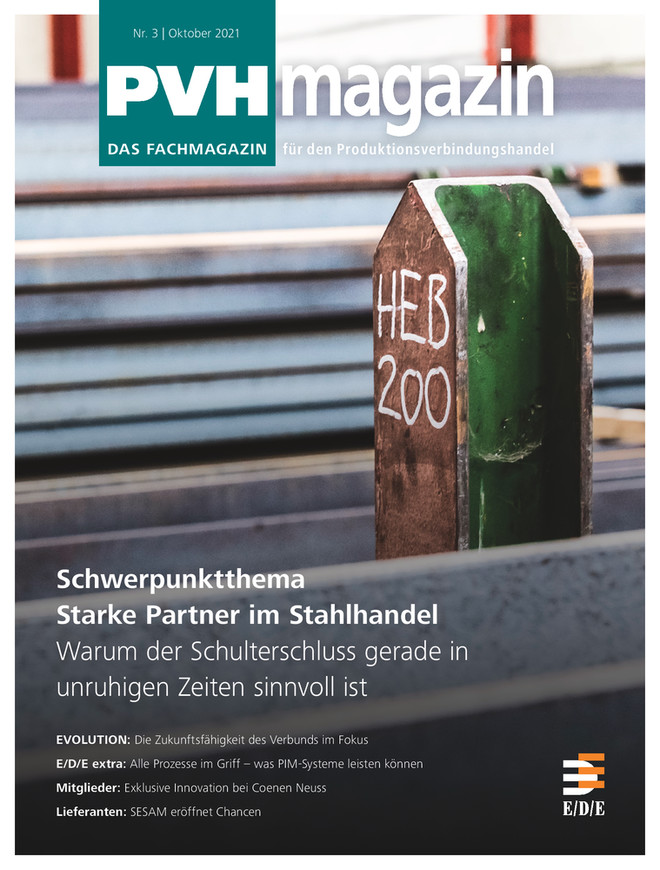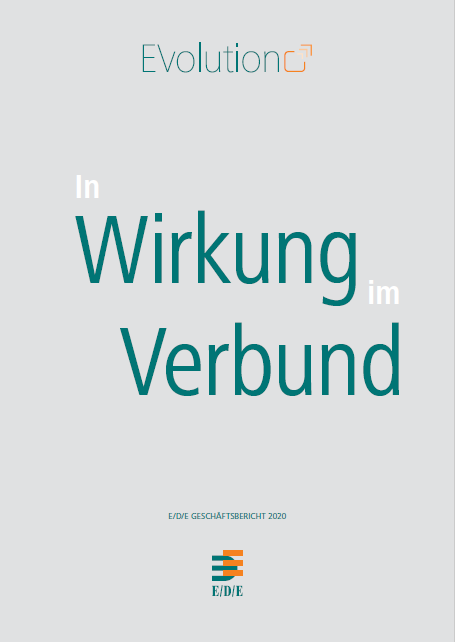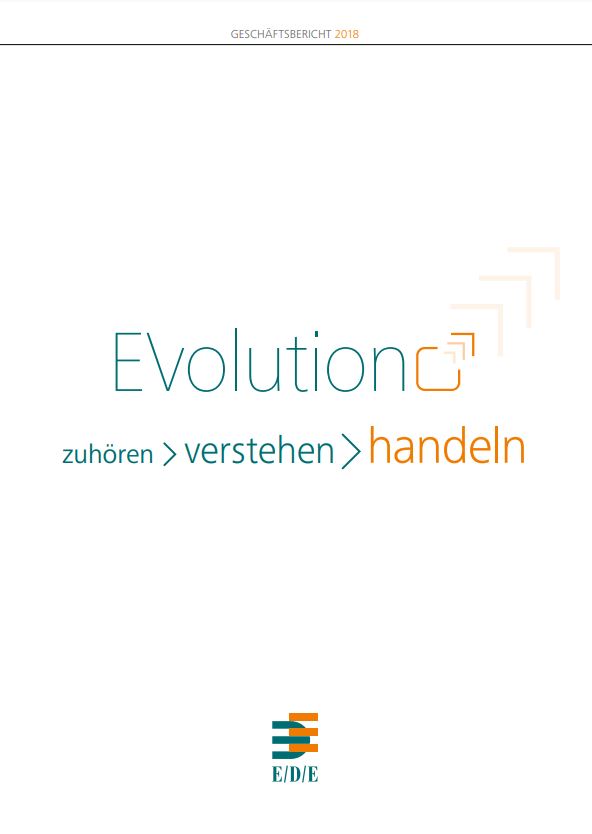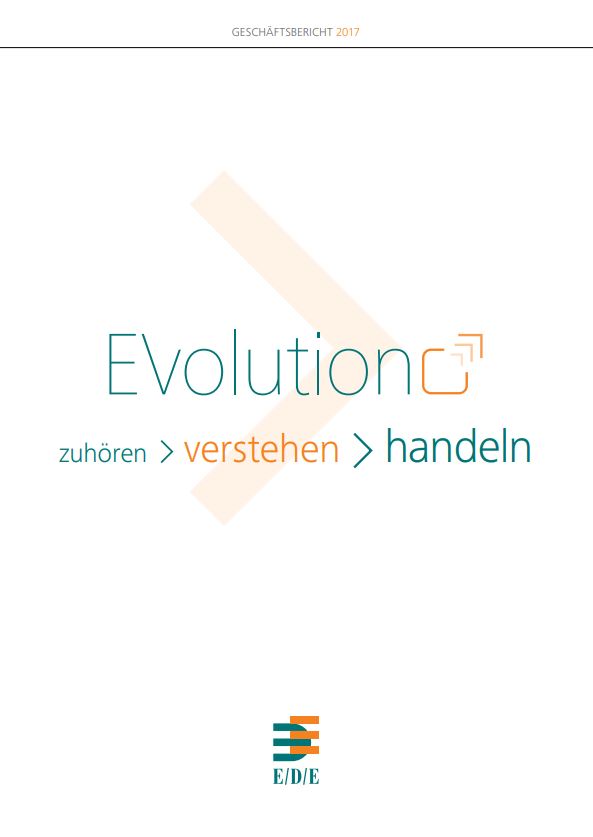Interview with Robert A. Sedlák
CEO S&P Consulting | GUEST PROFESSOR AT THE ECNU, SHANGHAI | BUSINESS MEDIATOR
“FROM THE BEGINNING, EVOLUTION HAS ALWAYS BEEN ABOUT THE SUSTAINABILITY AND THE STRENGTHENING OF THE E/D/E GROUP.“
Since 2016, E/D/E has been undergoing the far-reaching strategy and organizational development process EVOLUTION. This change process is professionally accompanied by the systemic management consultancy S&P Consulting. Guest Prof. Robert A. Sedlák, Chairman and CEO of S&P Consulting, describes how, in close cooperation between E/D/E and the S&P consulting team, sustainable and customized solutions were developed and implemented that were specifically tailored to the needs of E/D/E and its partners.
The interview was conducted for PVH-Magazin 3/2021.
Professor Sedlák, in 2016, E/D/E launched EVOLUTION, a broad-based strategy and organizational development process. How did this come about?
E/D/E, in particular Dr. Andreas Trautwein, had recognized that there was a need for change in order to prepare E/D/E and the entire group for the future from a position of strength – this was the starting signal for EVOLUTION. One of the key triggers at the time was the perceived difficulty of the organization in managing growth. If market conditions change, this not only requires companies to realign their strategy – the corporate culture must also accompany the change.
Why is corporate culture so important?
Corporate culture includes values, expectations, behavior patterns, and rules by which people act. This has a major impact on decision-making processes and on the way people interact with each other. Culture makes a significant contribution to the identity of the company and cannot be changed at the push of a button or by resolution. As a first step, we jointly conducted a comprehensive culture survey in the E/D/E Group in spring 2016. E/D/E had to find out for itself: What makes the E/D/E tick? What makes it strong, what inhibits it? What are the success factors for the future? What are the needs for change?
“If sustainable change is to take place, it must always come from within, that is, from within the organization.”
You are a systemic organizational consultant, but you argue that organizations cannot be changed from the outside. Can you explain that in more detail?
As systemic organizational consultants, we do not view companies as machines with simple cause-effect relationships, but rather as complex social systems that are determined by their internal network of relationships. By their very nature, they are designed to maintain a high degree of internal stability. This is necessary in order to remain capable of acting even in turbulent times. This organizational stability cannot be worked on from the outside.
If sustainable change is to take place, it must always come from within. As external parties, we can only influence this indirectly. For this purpose, we design suitable interventions, combined with impulses that make a relevant difference to the status quo and take into account the specific circumstances of the company. Often, massive interventions are needed to adapt structures and routines that have been developed over years. These adjustments must be made with foresight so that the organization remains capable of responding to the changes and sometimes disruptive developments taking place in its relevant environments.
What is your approach to creating change? And why does your approach fit so well with E/D/E?
I have to elaborate a little on this.
We do not offer an off-the-shelf solution, nor are we the experts who want to explain E/D/E’s business. We know that the majority of what the E/D/E needs to secure its future viability already exists within the E/D/E. Our approach allows us to combine the existing knowledge, experience, and perspectives with our consultant expertise and other external input. In this way, we reduce blind spots and open up completely new and different option spaces that were not there before. This is where the new emerges that did not exist before.
“IF THE EVALUATION AND SELECTION CRITERIA IN THE SELECTION PROCESS ARE NOT QUESTIONED CRITICALLY ENOUGH, AN ORGANIZATION RUNS THE RISK OF REVERTING TO FAMILIAR SOLUTIONS AND ULTIMATELY NOT CHANGING ANYTHING, DESPITE HAVING WORKED OUT VARIATIONS IN THE OPTIONS.”
When selecting options, we pay particular attention to the evaluation and selection criteria. If these are not questioned critically enough in the selection process, an organization runs the risk of reverting to familiar solutions despite having worked out variations in the options and ultimately not changing anything. This selection process is extremely demanding and requires the courage and farsightedness of the decision-makers to also be able to allow for something new – both of which E/D/E has proven time and again in our cooperation.
Far-reaching changes such as those brought about by EVOLUTION can only be implemented effectively if different perspectives are taken into account in the change process simultaneously. We call this the 3rd mode of consulting, which means that we not only consider the factual dimension, but also the process and social dimension at the same time. Particularly in complex organizations such as E/D/E, it is essential to constantly reflect on what has happened and to incorporate the insights gained into the next steps – in other words, to keep the process adaptive. A linear approach is unsuitable for achieving the desired effect. Without this attitude, there could have been no fit between the E/D/E and the consultation. An “E/D/E solution” was needed and we found it together.
What major pattern changes could be achieved with EVOLUTION and what are the benefits for the partners?
In the past, strategic decisions usually took place behind closed doors. Within the framework of EVOLUTION, E/D/E has taken a completely new approach and has relied on broad participation within the management system in its strategy work, which has led to a high quality of implementation of the organizational changes. The ability to cooperate across departments has also developed significantly and there is a culture of open communication. In my opinion, this change is reflected in the cooperation with partners: knowledge is shared, solutions are developed jointly, and strengths are bundled. This is the basis for successful collaboration within the network.
What are the specific success factors in such change processes?
At the beginning of a far-reaching transformation process such as EVOLUTION, the need for change must be communicated in such a comprehensible way that the organization accepts it and is prepared to go along the way. After all – we should not fool ourselves here – a change process of this kind is a major feat for the entire organization. The next step is to develop an attractive outlook for the future, one that makes the coming efforts worthwhile. Another key success factor is the organization-specific process architecture with concrete measures and a schedule. This ensures that the right key decisions are made in the right order and in the right processing format. In addition, accompanying reflection and communication are indispensable as success factors and control elements.
What is particularly impactful about the change process in E/D/E?
From the beginning, EVOLUTION has always been about E/D/E, its partners and the performance of the network. The entire change process is tailor-made and individually designed for E/D/E. In the development of the new organizational design, the premise was to preserve what works and to develop custom-fit organizational structures in such a way that they take into account the inherent complexity and the specific logic of E/D/E’s business model. In addition, the perspective of end-to-end consideration of all important value chains was brought to the fore. This was a significant starting point that needs to be further anchored in the ongoing process.
It was also formative that the EVOLUTION process is not set in stone, but is designed to be adaptive. This means that the E/D/E learns to observe beyond the concrete change occasion how it has dealt with change processes so far and whether these established patterns themselves need to be changed and further developed. Thus, if decided interventions do not achieve the intended effect, the change is modified in the ongoing process. All collected findings are integrated into the respective next steps. Therefore, among other things, the EVOLUTION process architecture has been regularly reflected upon and permanently developed over the past years.
What is the role of the E/D/E partners?
A very decisive one! Their market requirements and expectations were made the central issue in many phases of the change process. The system intelligence available within the group was and is an important influencing factor.
The willingness of members and cooperation partners to contribute to the process and invest a great deal of time in doing so, especially in the context of the innovative stakeholder analysis (ISA), has, in my perception, been perceived in E/D/E as a great appreciation. In turn, E/D/E has systematically shared the insights and analysis and ultimately implemented structural changes that result in better market performance. In its new setup, E/D/E has become much closer to the market and to its partners, much faster and more digital. This has been demonstrated not least in dealing with the Corona pandemic.
How did you experience the E/D/E in the EVOLUTION process?
Throughout the entire process, I have noticed a high level of commitment and personal dedication from all those involved in the various committees and teams. Important key players were ready to dare something new, to support EVOLUTION, and to invest time and vital energy in this.
Throughout the entire change process, we perceive a high degree of reliability in the cooperation within the management system. With the anchoring of the reorganization, E/D/E has achieved a new quality in member management and there is noticeable progress in cooperative interaction internally and externally and at all levels.
Your conclusion, in a nutshell?
E/D/E is undergoing a profound transformation process against the backdrop of an increasingly digitized world characterized by disruptive changes. The outside-in perspective, i.e. the needs of the partners in the E/D/E group, and the end-to-end view of the value chains are essential elements of the process. The use of the system intelligence of the E/D/E group as well as the high level of commitment of the management, important key players, and the employees form an essential resource for not only starting such a long-term transformation process but also successfully continuing it. From the very beginning, the focus was on continuously expanding the performance and future viability of E/D/E group for the benefit of its members, cooperation partners, and suppliers.
(Quelle: www.ede.de)
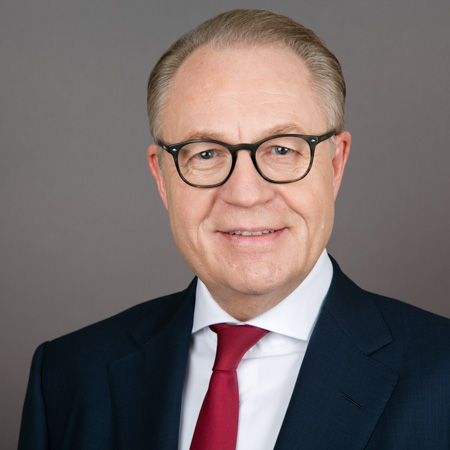
Robert A. Sedlák is Senior Executive Consultant, Chairman, and CEO at S&P Consulting International Consulting. Since 1987 he has been working as an independent management consultant for both DAX companies and medium-sized companies. One of his consulting focuses is the topic of “Foresighted Self-Renewal”. This method, developed with leading organizational scientists of the New Systems Theory, enables organizations to recognize signals for change at an early stage and to use them specifically for a self-renewal process. In addition, he is intensively engaged in the question of how organizational and personal learning processes can be optimally interlocked in the context of change processes.
Since 2013, Robert A. Sedlák has been a visiting professor at the East China Normal University (ECNU) Shanghai. He has also been a member of the German Association of Management Consultants (BDU e.V.) for over 25 years and is a CMC (Certified Management Consultant) certified management consultant.
In September 2021, he completed his training as a certified business mediator according to the Mediation Act at the Mediation Academy Berlin.
Read the interview in the
PVH magazine:
Further information about EVOLUTION
EVOLUTION in press releases and PVH magazine
- Strong growth of E/D/E in the first quarter of 2021
- Comprehensive strategy and organizational development process
- Added value in supply networks and industrial services through matching analysis
- Interview: It’s not about selling products
- E/D/E offers a complete product range
- New management resort to leverage key levers for securing the future
- Implementation of member management
- Clearing Center productive – one interface many advantages
- Strengthening the competitiveness of partners
- Optimized supply chain performance
- Reorganization of Digital Services
- Implementation of strategy and organizational development process
- Expansion of management and strengthening of core function
- Optimized core services and intelligent digitalization
- Digitalization, internationalization and process optimization
- Change in logistics
- Continuous improvement of performance
- Excerpt of the results of the innovative stakeholder analysis
Further interviews on currently ongoing transformation processes
Learn more about current organizational transformation processes that are accompanied by S&P Consulting.


